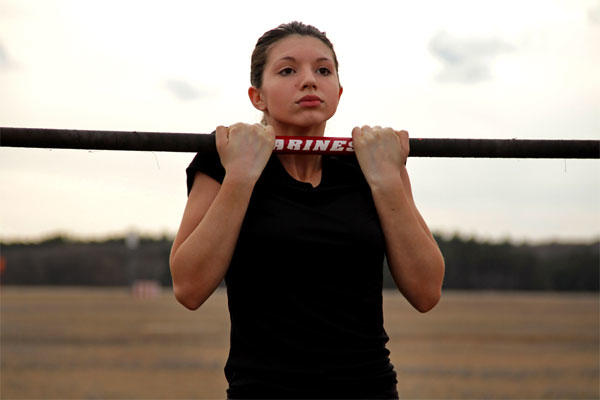A move to revisit Marine Corps body composition standards in light of women entering ground combat jobs may mean a reprieve from the unpopular tape test method of measuring body fat, Marine Corps Commandant Gen. Neller told Military.com this month.
During a Feb. 2 Senate Armed Services Committee hearing on the Pentagon's recent mandate to open combat jobs to women, Neller said physical standards may have to change to accommodate female Marines who bulk up with muscle to better handle the load-bearing requirements of infantry jobs.
'One of the things I've heard as I've gone around and talked to female Marines is, 'Hey, I'm out working out. I'm lifting weights. I'm getting bigger. And now I'm outside the height-and-weight standards. Are you going to change the height-and-weight standards?'" he told the committee.
In a brief Feb. 4 interview, Neller confirmed to Military.com that he also planned to examine alternatives to the tape test -- loathed among more muscular Marines and body builders because it relies on a neck-to-waist measurement ratio that can skew in favor of those with more wiry frames. The commandant warned, however, that alternative fat measurement methods also had their drawbacks.
Neller said he had visited a Bod Pod, a new device that uses air displacement to measure body fat, but had been informed that the method often calculates higher body fat percentages than the 'rope-and-choke" measuring tape calculation.
'So, do you change the amount of body fat? Do you change the amount you can weigh? We're going to look at it," he said.
Neller said he had had a recent conversation with one of the three female officers to graduate Army Ranger School. She drew his attention to the fact that all three women had densely muscular physiques that enabled them to carry packs and march with the men, he said.
'Whether women go into ground combat or not, they're telling me they're going to do pullups for the fitness test. They're going to get stronger. You get stronger, normally you gain weight, you get thicker," Neller said. '[Female Marines are] wanting to know, 'Hey, Commandant, make up your mind. What are you going to have us do and if we do this, understand that I'll do it, but it's going to cause me probably to have a physical change, so don't penalize me for doing what you're telling me to do.'"
Neller ordered a comprehensive review of Marines' fitness standards last November that will examine scoring on the physical fitness and combat fitness tests as well as height, weight and body fat limits in order to determine whether current standards are relevant and conducive to combat readiness. The results of that review are due in July.
In a January fragmentation order to the Corps, Neller also announced the creation of a force fitness instructor program that would install trainers at the company, battery and squadron level to improve and enhance overall fitness.
These instructors will be Marine noncommissioned officers who will undertake fitness instruction as a primary or collateral duty and receive certification through a training course, Neller said in the interview. He suggested these trainers might improve individual Marines' fitness levels with a CrossFit-style workout regimen that could be tailored for building different muscle groups or designed to change each day.
'If you're a CrossFitter, there's the workout of the day, the WOD. Why don't we have a Marine Corps WOD? You go to the Marine Corps fitness app, it pops up, here's the WOD. It's playing on every gym in the Marine Corps," he said. 'I think we can do this. People are doing a lot of great stuff but we just don't universally have a plan."
-- Hope Hodge Seck can be reached at hope.seck@monster.com. Follow her on Twitter at @HopeSeck.






























